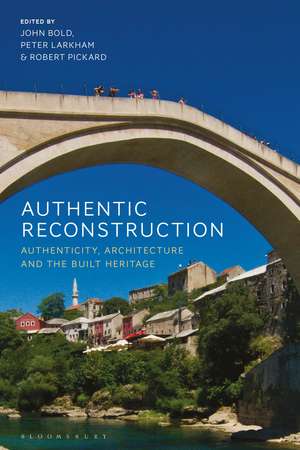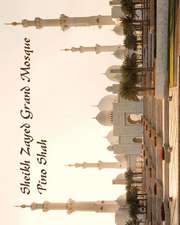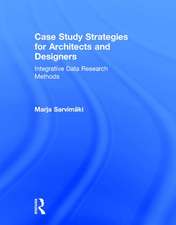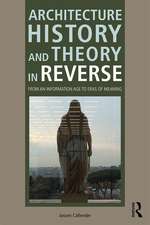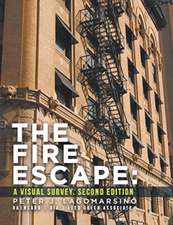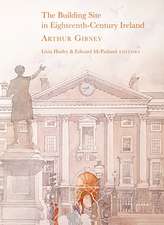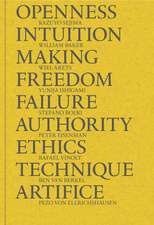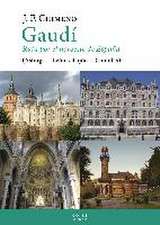Authentic Reconstruction: Authenticity, Architecture and the Built Heritage
Editat de John Bold, Peter Larkham, Robert Pickarden Limba Engleză Paperback – 5 feb 2020
| Toate formatele și edițiile | Preț | Express |
|---|---|---|
| Paperback (1) | 226.37 lei 3-5 săpt. | |
| Bloomsbury Publishing – 5 feb 2020 | 226.37 lei 3-5 săpt. | |
| Hardback (1) | 574.10 lei 6-8 săpt. | |
| Bloomsbury Publishing – 13 dec 2017 | 574.10 lei 6-8 săpt. |
Preț: 226.37 lei
Preț vechi: 250.46 lei
-10% Nou
Puncte Express: 340
Preț estimativ în valută:
43.31€ • 45.23$ • 35.77£
43.31€ • 45.23$ • 35.77£
Carte disponibilă
Livrare economică 25 martie-08 aprilie
Preluare comenzi: 021 569.72.76
Specificații
ISBN-13: 9781350154308
ISBN-10: 135015430X
Pagini: 352
Ilustrații: 50 bw illus
Dimensiuni: 156 x 234 x 19 mm
Greutate: 0.78 kg
Editura: Bloomsbury Publishing
Colecția Bloomsbury Visual Arts
Locul publicării:London, United Kingdom
ISBN-10: 135015430X
Pagini: 352
Ilustrații: 50 bw illus
Dimensiuni: 156 x 234 x 19 mm
Greutate: 0.78 kg
Editura: Bloomsbury Publishing
Colecția Bloomsbury Visual Arts
Locul publicării:London, United Kingdom
Caracteristici
Likely to stimulate discussion at an international level about the need for guidelines on the reconstruction of historic sites following war or natural disaster
Notă biografică
John Bold is former Reader in Architecture at the University of Westminster, UK and a consultant to the Council of Europe on cultural heritage.Peter Larkham is Professor of Planning at Birmingham School of the Built Environment, Birmingham City University, UK.Robert Pickard is Emeritus Professor in Heritage Conservation at Northumbria University, UK, and a consultant to the Council of Europe on cultural heritage.
Cuprins
AcknowledgementsNotes on contributors Introduction: Reconstruction: the built heritage following war or natural disaster - John Bold Part 1: Reconstruction in traditional style after conflict1.1: Traditional Building in Germany after the Second World War - Eva von Engelberg-Dockal and Hans-Rudolf Meier1.2: Reconstruction of historic monuments in Poland after the Second World War: the case of Warsaw - Ingrid Appelbom Karsten1.3: Post-conflict urban reconstruction of bazaars in Gjakova and Peja, Kosovo - Bujar Demjaha Part 2: Reconstruction in contemporary style after conflict2.1: Originality and authenticity in the post-war reconstruction of Britain - Peter J. Larkham and David Adams2.2: Dutch reconstructed monuments in review - Marieke Kuipers2.3: The reconstruction of France in the twentieth century following two world wars: a political or technical challenge? - Danièle Voldman2.4: Reconstruction in South-East Europe and Georgia - an architect's perspective: scale, materials and appearances - David Johnson Part 3: Reconstruction after natural or accidental disaster3.1: Post-disaster reconstruction in the United States: a review of the role of authenticity in historic preservation policies and practices - Gail Sansbury3.2: Reconstruction after fire - Robert Pickard3.3: The path of reconstruction of the city of Aquila after the earthquake of 2009 - Alberto Lemme3.4: The town reassembled: authenticity and transformation in Kiruna, Sweden - Jennie Sjöholm Part 4: Political dimensions and image building4.1: Historic buildings preservation and public opinion in England - Martin Cherry4.2: Politicised reconstruction: the project 'Skopje 2014' - Julija Trichkovska4.3: The future of post-civil war reconstruction: lessons from Spain - Olivia Muñoz-Rojas Conclusions, guidelines and looking forward - John Bold, Robert Pickard and Peter J. Larkham
Recenzii
Timely, constructive, and essential reading for anyone seriously interested in the politics, practice and philosophies of historic preservation. The richness of the discussion and the range of examples extend its value far beyond the specific issue of post-disaster recovery... It contains some remarkable stories and is totally fascinating.
For urban historians interested in the ideas around heritage and reconstruction as well as the practicalities, this is anextremely useful volume.
A call to arms . . . This excellent book seeks to become the beginning of a process, presenting more questions and dilemmas than answers, but setting out a process by which answers might be found.
For urban historians interested in the ideas around heritage and reconstruction as well as the practicalities, this is anextremely useful volume.
A call to arms . . . This excellent book seeks to become the beginning of a process, presenting more questions and dilemmas than answers, but setting out a process by which answers might be found.
